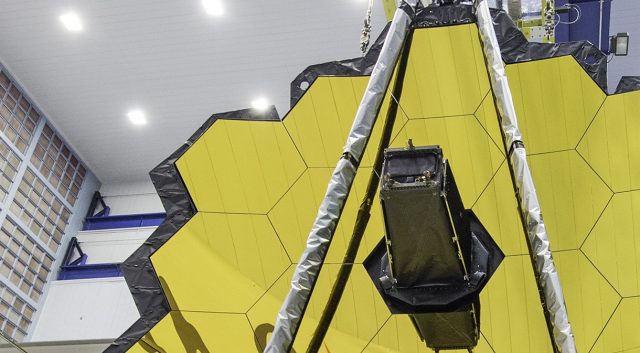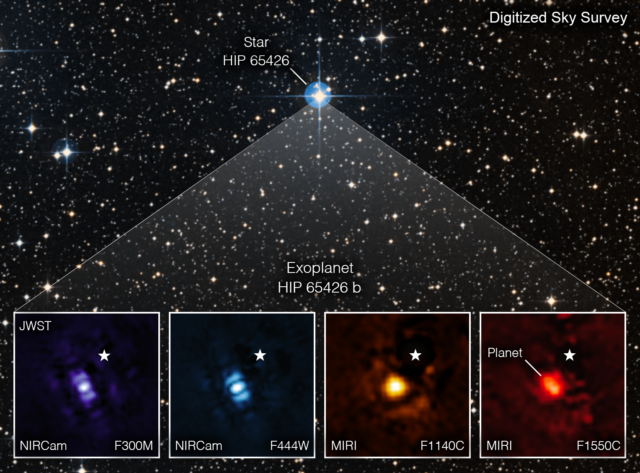NASA’s James Webb Telescope Snaps Its First Picture of an Exoplanet

The James Webb Space Telescope (JWST) has taken pictures of stars, planets, and galaxies — now we can add exoplanets to the list. NASA reports that Webb has seen its first exoplanet, known as HIP 65426 b. This isn’t a new discovery, but it shows that the telescope is working even better than its designers had hoped.
HIP 65426 b orbits a star 385 light years away from Earth, which is nearby in the grand scheme. The planet, which is 6-12 times the mass of Jupiter, was discovered in 2017 by the SPHERE instrument on the European Space Agency’s Very Large Telescope. The VLT successfully captured an image of the alien world, making it one of just a handful of exoplanets to be directly imaged. The new JWST image reveals even more detail, though.
While astronomers have confirmed more than 5,000 exoplanets, most of those have been identified from gravitational or stellar transit observations. Directly imaging these worlds is challenging because the stars they orbit are orders of magnitude brighter. In the case of HIP 65426 b, the star is 10,000 times brighter. It’s only visible because it’s enormous and orbits at a much greater distance than the planets in our solar system. Neptune is about 30 AU (30 times the distance between Earth and the sun) from the sun, but HIP 65426 b is 87 AU from its star.
The image below shows HIP 65426 b in four different infrared wavelengths — from left to right: 3 micrometers, 4.44 micrometers, 11.4 micrometers, and 15.5 micrometers. The pill-shaped lights in the shorter wavelength images are not part of the HIP 65426 system. The star marks the location of host star HIP 65426. NASA says they’re just artifacts of the telescope’s optics. Regardless of the distortion, this is the first time an exoplanet has been imaged below 5 micrometers. Webb is designed to operate in the infrared, which is why it’s at the Earth-Sun L2 Lagrange Point. Ground-based observatories encounter more infrared interference from Earth’s atmosphere.

Webb’s first exoplanet in four different infrared wavelengths. Credit: NASA/ESA/CSA
“This is a transformative moment, not only for Webb but also for astronomy generally,” said the University of Exeter’s Sasha Hinkley, who led the international team. While the data has not yet been peer-reviewed, it appears Webb was able to provide more accurate mass and luminance data on HIP 65426 b. This further confirms that the planet doesn’t conform to our current models of planetary formation. Future observations might be able to explain why, but this is just the beginning of Webb’s work on exoplanets.
Based on this early data, it appears the telescope will exceed its predicted performance by a factor of 10. It should be able to resolve a planet one-third the size of Jupiter at 100 AU from a sun-like star. A planet like Neptune should be visible at 100-200 AU from a red dwarf. In the nearby Alpha Centauri system, Webb should be capable of seeing a planet just five times the radius of Earth between 0.5 and 2.5 AU. It was a rough ride, but all the years of work on the JWST are paying off.
Now read:

Comments are closed.